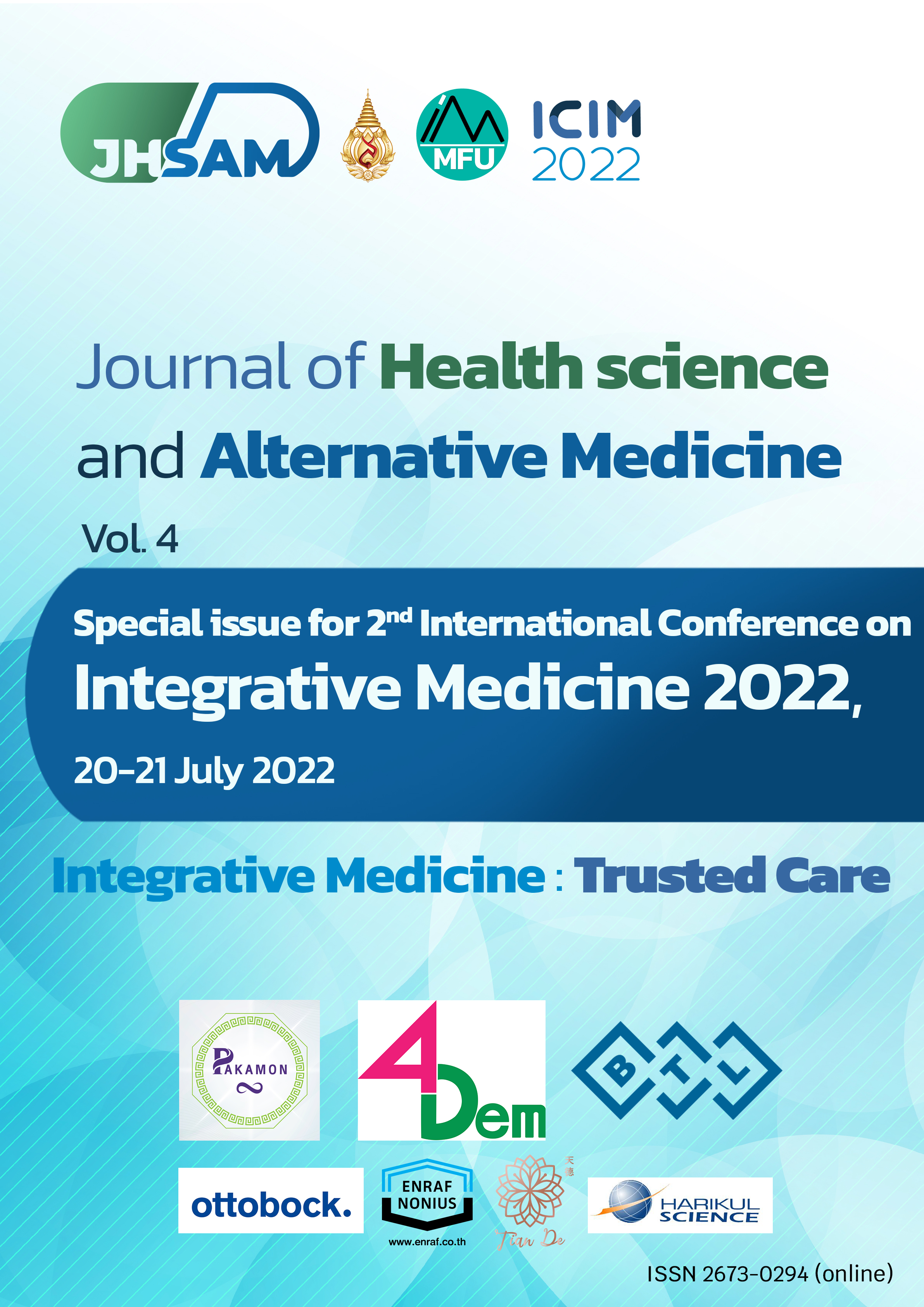C14. Clinical Observation of Magui Wenbi Granules in the Treatment of Rheumatoid Arthritis and Its Effect on IL-23 / IL-17 Axis
Main Article Content
Abstract
Introduction: Maguiwenbi granules are modified from Professor Wang Lvqiu's Xinbitongling granules used to treat cold-damp arthralgia syndrome in active RA and achieved an excellent curative effect. Previous studies have found that Xinbitongling can inhibit the expression of RANKL and IL-17 in the serum of CIA rats and alleviate the bone destruction of RA.
Objective: To observe the clinical efficacy of Magui Wenbi Granules in treating active rheumatoid arthritis (cold-dampness syndrome).
Methods: 60 patients were collected according to the NAPA standard and randomly divided into a control group and a treatment group with 30 cases each. The control group received conventional treatment, and the treatment group was added with Maguiwenbi granules. The joint treatment period was 12 weeks. Record the number of joint tenderness, joint swelling, DAS28, ESR, CRP, RF, TCM syndrome score before and after treatment, serum IL-23 and IL-17A levels, and use TCM syndrome efficacy evaluation standard and ACR20/50/70 standard to evaluate Perform overall clinical efficacy.
Results: 59 patients, 1 excluded, 29 in the treatment group, and 30 in the control group. (1) The treatment group was significantly better than the control group in reducing the number of joint tenderness, swollen joints, DAS28, ESR, and TCM syndrome scores (P<0.01), and better than the control group in reducing IL-17A (P<0.05). However, there was no statistical difference between the two groups after treatment; (2) The total effective rate of TCM syndromes in the treatment group was 96.6%, and in the control group was 70.0%; the ACR20 and ACR50 of the treatment group were 96.6% and 24.1%, respectively, the ACR20 and ACR50 of the control group were 73.3% and 20.0%.
Conclusion: Maguiwenbi Granules combined with conventional regimens have a definite clinical effect in the treatment of RA. It can significantly relieve the patient's clinical symptoms, reduce disease activity, increase clinical remission rate, and reduce IL-23 and IL-17A levels. It may inhibit IL-23/IL-17 inflammation axis.
Article Details

This work is licensed under a Creative Commons Attribution-NonCommercial-NoDerivatives 4.0 International License.
JHSAM publishes all articles in full open access, meaning unlimited use and reuse of articles with appropriate credit to the authors.
All our articles are published under a Creative Commons "CC-BY-NC-ND 4.0". License which permits use, distribution and reproduction in any medium,
provided that the original work is properly cited and is used for noncommercial purposes.
References
魏蕾, 姜林娣. 类风湿关节炎病因和发病机制研究进展 [J]. 医学综述, 2015, 21(09): 1548-1551.
李平顺, 周孟茹, 王钢et al. 中医药干预类风湿关节炎Th17/Treg平衡的研究进展 [J]. 中国医药导刊, 2019, 21(07): 421-425.
刘肃, 张鑫, 王春生. 类风湿性关节患者血清炎性细胞因子水平及其临床意义分析 [J]. 基因组学与应用生物学, 2018, 37(09): 4100-4105.
安丽欣. 血清IL-18、IL-22、IL-23表达在类风湿性关节炎中的意义 [J]. 国际检验医学杂志, 2018, 39(07): 801-804.
朱丰林.基于“温经通络法”立方的新痹痛灵方对CIA模型大鼠骨破坏的影响及机制研究 南京中医药大学,2015
D A, T N, AJ Set al. 2010 Rheumatoid arthritis classification criteria: an American College of Rheumatology/European League Against Rheumatism collaborative initiative [J]. Arthritis and rheumatism, 2010, 62(9): 2569-2581.
郑筱萸主编. 中药新药临床研究指导原则 [J]. 2002: 392页.

